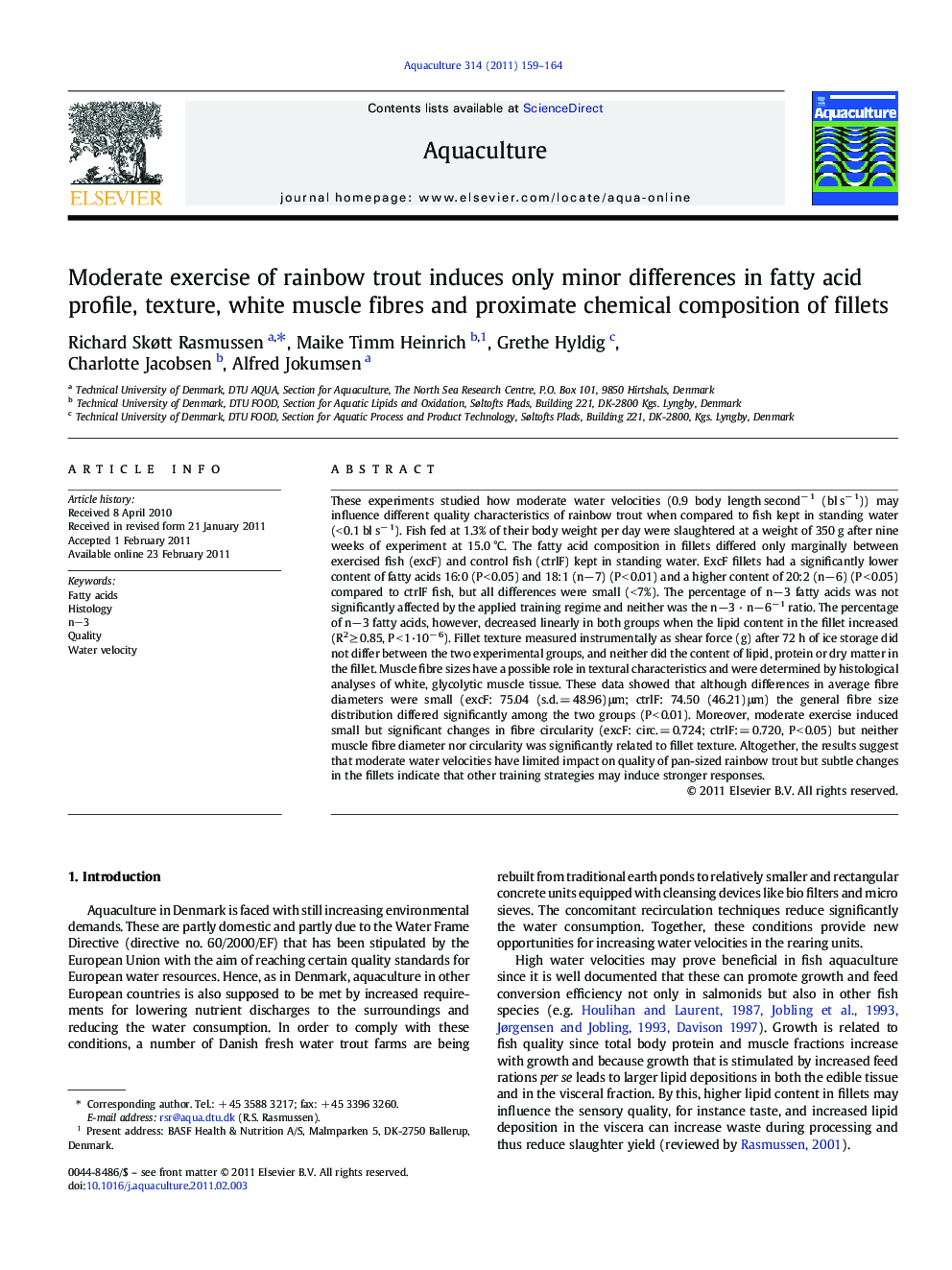| Article ID | Journal | Published Year | Pages | File Type |
|---|---|---|---|---|
| 2423116 | Aquaculture | 2011 | 6 Pages |
These experiments studied how moderate water velocities (0.9 body length second− 1 (bl s− 1)) may influence different quality characteristics of rainbow trout when compared to fish kept in standing water (< 0.1 bl s− 1). Fish fed at 1.3% of their body weight per day were slaughtered at a weight of 350 g after nine weeks of experiment at 15.0 °C. The fatty acid composition in fillets differed only marginally between exercised fish (excF) and control fish (ctrlF) kept in standing water. ExcF fillets had a significantly lower content of fatty acids 16:0 (P < 0.05) and 18:1 (n−7) (P < 0.01) and a higher content of 20:2 (n−6) (P < 0.05) compared to ctrlF fish, but all differences were small (< 7%). The percentage of n−3 fatty acids was not significantly affected by the applied training regime and neither was the n−3 · n−6− 1 ratio. The percentage of n−3 fatty acids, however, decreased linearly in both groups when the lipid content in the fillet increased (R2 ≥ 0.85, P < 1·10− 6). Fillet texture measured instrumentally as shear force (g) after 72 h of ice storage did not differ between the two experimental groups, and neither did the content of lipid, protein or dry matter in the fillet. Muscle fibre sizes have a possible role in textural characteristics and were determined by histological analyses of white, glycolytic muscle tissue. These data showed that although differences in average fibre diameters were small (excF: 75.04 (s.d. = 48.96) μm; ctrlF: 74.50 (46.21) μm) the general fibre size distribution differed significantly among the two groups (P < 0.01). Moreover, moderate exercise induced small but significant changes in fibre circularity (excF: circ. = 0.724; ctrlF: = 0.720, P < 0.05) but neither muscle fibre diameter nor circularity was significantly related to fillet texture. Altogether, the results suggest that moderate water velocities have limited impact on quality of pan-sized rainbow trout but subtle changes in the fillets indicate that other training strategies may induce stronger responses.
